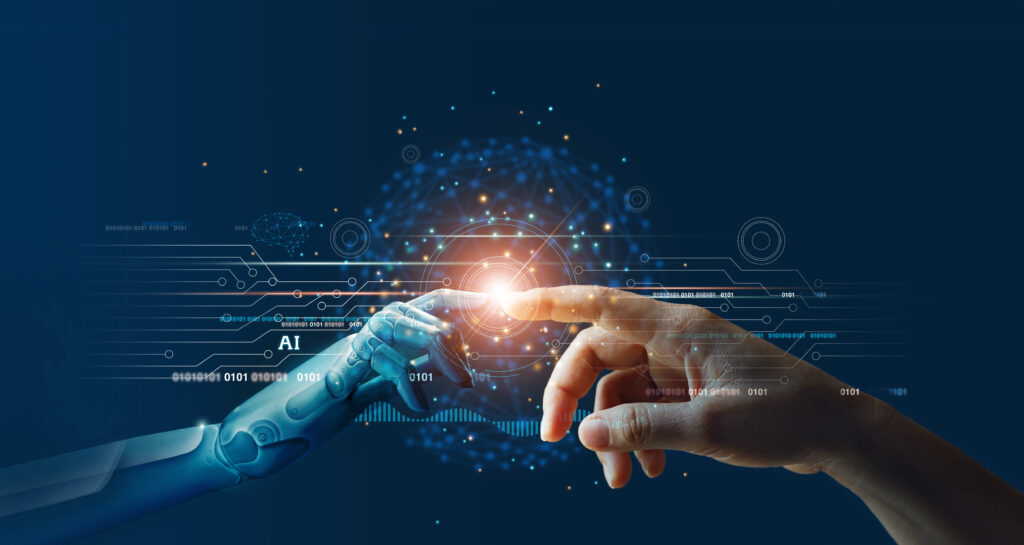




In 2022 , we are deep into AI. New AI solutions across every industry are appearing in the marketplace everyday. Here are a few ways that humans and AI are working together.
#1: Organizations are focusing on AI initiatives that augment human performance, not replace it.
For the last few decades, the application of machine learning has been focused on replacing human performance and efforts with machine efforts. New AI solutions provide highly relevant and context-driven information with incredible speed and precision. This allows humans the speed and ability to do their most meaningful work.
Rather than replacing human intervention, these modern (and evolving) AI technologies will allow people to analyze and use structured and unstructured data in a quicker and more natural way. One great example is the ability for machines to focus on tedious tasks like retrieving data while the human can focus on strategy and decision making.
Trend #2: Vendors must provide comprehensive AI-enabled solutions for line-of-business teams instead of focusing on large-scale developer tools and technologies for IT
Traditionally, the AI world and vendors have focused on developing tools for internal IT teams or consulting organizations to apply the technology for a specific use case in an enterprise application. Now, AI vendors must develop specific AI-enabled solutions that can be implemented quickly and without coding. By providing human-centered solutions to business departments, vendors will enable individuals to immediately generate insights that drive decisions. What is the result? Organizations will pivot their investments in AI, moving away from highly customized solutions and towards configurable (off-the-shelf) options.
Flexibility will be key to these AI solutions so that business users can leverage the technology for their specific needs. Most AI tools have been focused on developing tools for data cleansing, annotation, labeling, and training of machine learning models by AI experts and developers. The shift (that has already started) will have AI vendors focused on moving up the technology stack by providing user-facing solutions on their platforms. This provides an opportunity to configure an AI-enabled app to a company’s specific need and it will do so without the organization having to involve IT resources.
Trend #3: NO-code solutions providing greater transparency is paramount
The concept of “democratization” of AI and the delivery of platforms being used without additional coding is very much a hot topic. Most IT departments would agree that this is an added benefit! Some may argue that it’s less about democratization of AI and more about the “universality” of AI. Universal AI will be embedded in a suite of configurable business solutions that require zero coding. Leaders in AI also recognize that actual democratization only occurs when the universe of institutional knowledge of an organization is available to the universe of business users across a universe of business problems.
Until now, vendor attention has been on developing AI platforms and tools for building custom solutions. In 2022, expect to see them deliver more out-of-the-box solutions that offer greater transparency and demonstrate how results were generated. Why is this important? It is important because a constant challenge for AI-enabled solutions has always been their inability to explain how they come to a set of results or even to reproduce those results. Vendors will be required to offer greater clarity and transparency into AI-produced results, including evidence and explanations for results produced by their platform and its algorithms.
What other trends do you recognize or predict in the coming year? Comment below!